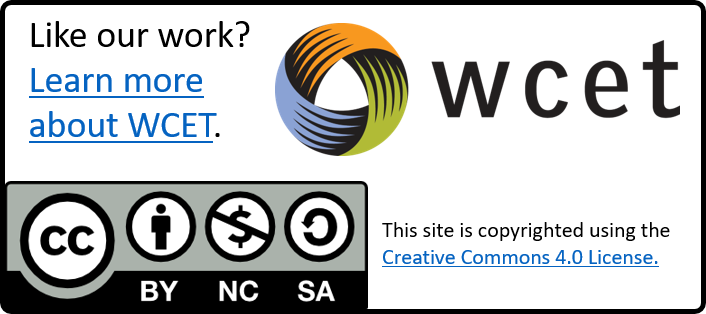In Harold Ramis’ 1993 classic, Groundhog Day, Bill Murray portrays a television weatherman sent to cover Punxsutawney Phil on Groundhog Day who ends up repeating the day over and over again. At first, Murray’s character, Phil Connors, uses the time loop to his advantage—binge eating, having one night stands, committing robbery, and manipulating local residents based on his knowledge of events—but after time he starts to despair as his life stalls with no end in sight.
I suspect many of us feel a bit like Phil Connors right now—every day seems like the last as we go through a seemingly endless series of Zoom meetings, emails, and revisiting many of the same issues over and over as circumstances require us to reevaluate and revise former decisions. High on that list of issues is likely questions about federal regulations and regulatory relief in this time or remote education.
You may remember that early in the pandemic the Department of Education issued guidance that waived a number of regulations related to remote instruction and distance education. Since then, WCET has continued to provide updates around the Department’s waiver of certain distance education regulations, accreditor responses to the pandemic, accommodations related to professional licensure, implementation of the CARES Act, and a number of other issues (you can view WCET’s one page policy briefs on COVID-19 related issues on our COVID-19 policy resource page). As folks actively plan for the fall, we thought it would be helpful to provide a quick update on the distance education regulatory landscape.
Department of Education Updates
The Department of Education issued guidance around regulations impacted by the pandemic on several occasions in March and April. These included guidance on financial aid, distance education approvals, virtual visits for accreditation, and how to handle pandemic related student withdrawals. Since then, the Department has issued several other guidance documents of importance for distance education and higher education leaders.
Expansion of Original Guidance
On May 15th the Department issued updated guidance on several accreditation and financial aid issues, including:
- Extending Distance Education Waivers. The Department waived several regulations in its April 3 guidance (such as temporary approvals to transition to distance education as a result of COVID-19 and the ability to enter into consortium agreements to help students ) and it extended those waivers to terms that begin on or between May 5 and December 31, 2020.
- Extending Virtual Visits for Accreditation. The flexibility provided in the March 17 guidance for virtual site visits for accreditation is extended to the end of the calendar year.
- Verification of High School (or Equivalent) Completions Status on Transcripts. New students who are unable to document completion of high school or obtain transcripts due to COVID-19 may submit a signed statement attesting to their high school status.
- Leave of Absence. Provides flexibility for students who had to leave a program due to COVID-19 as to where in their program that they may resume training.
- Return of Title IV Funds for Students in Online Programs. For on-campus students enrolled in a term that includes March 13 who subsequently withdrew, the institution is not required to return Title IV funds. However, institutions or programs (we think) “that did not undergo changes in educational delivery or campus operations as a result of a COVID-19 emergency” must obtain a written attestation from the student that withdrew from a distance education program due to COVID-19.
Accessibility Regulations
It’s taken a while for the Department to directly address accessibility in the context of higher education, but on May 12th the Department of Education’s Office for Civil Rights (OCR) released Questions and Answers for Postsecondary Institutions Regarding the COVID-19 National Emergency. This technical assistance document addresses the Department’s expectations that institutions providing distance learning will comply with all Federal disability statutes, including Section 504 of the Rehabilitation Act of 1973 and Title II of the Americans with Disabilities Act. The documents states that:
“institutions must make decisions that take into consideration the health, safety, and well-being of all their students and staff, and should take reasonable steps to address the needs of students with disabilities.”
The document also addresses the use of captioning services in lieu of sign language interpreters and OCR’s expectation that:
“If an institution can establish that providing a particular aid or service would result in a fundamental alteration or undue burden, the institution would still be required to take other steps-steps that would not result in such an alteration or such burdens-but which would nevertheless ensure that, to the maximum extent possible, the individual with a disability can participate in, and receive the benefits or services provided by, the institution’s education program or activity.”
The CARES Act
Congress passed and the president signed the Coronavirus Aid, Relief, and Economic Security (CARES) Act, a $2.2 trillion emergency aid package, on Friday, March 27th. The package contains $30.75 billion in education funding with approximately $14.45 billion of that earmarked for the Higher Education Emergency Relief Fund (HEERF). The Act outlined how that $14.5 billion should be used:
- 90 percent goes to institutions (approximately $13 billion).
- 75 percent (roughly $9.75 billion) distributed based on the FTE enrollment of Pell-eligible students not enrolled in fully online programs.
- 25 percent (roughly $3.25 billion) distributed based on the FTE enrollment of non-Pell eligible students not enrolled in fully online programs.
- At least 50 percent of institutional funds must be used to provide direct emergency financial aid grants to students to “help cover expenses related to the disruption of campus operations due to coronavirus.”
- 10 percent (approximately $1.4 billion) divided between historically black colleges and universities and smaller institutions.
- Approximately $3.75 billion (10 percent of the money earmarked for education) to states for discretionary education spending. These funds include a maintenance of effort requirement; however, the maintenance of effort requirement can be waived by the Secretary of Education.
WCET, as a part of the National Council for Online Education (NCOE), wrote Secretary DeVos and Congressional leaders to request that any future stimulus packages include assistance for distance education students.
The Department has also published a FAQ related to the Higher Education Emergency Relief Fund and student emergency aid that clarifies that student emergency aid must be made directly to students and cannot be used to reimburse tuition and/or fees or the purchase of hardware or software. The guidance also explicitly states that aid can only be provided to Pell eligible students thus preventing institutions from providing federally funded assistance to DACA students (California community colleges are suing Secretary DeVos over the exclusion of DACA students). In addition to the FAQ on HEERF student emergency aid, the Department also released information on institutional HEERF Aid. Institutions can use aid:
- To reimburse themselves for student refunds.
- For additional emergency student aid.
- To pay student fees associated with online delivery such as online proctoring or direct instructional services provided by a third party, including an OPM.
Institutions cannot use the new aid:
- To pay down student balances.
- To create new scholarships.
- To pay salaries or bonuses of senior administrators or executives.
- For stock buybacks, shareholder dividends, capital distributions, and/or stock options.
Finally, the Department has released information on a new grant competition to “spark student-centered, agile learning opportunities to support recovery” from the pandemic. The $300.7 million in discretionary funding will go to states and can be used for K-12 and/or higher education with $127.5 million going to Reimagining Workforce Preparation grants. These grants will assist in expanding short-term postsecondary programs and work-based learning opportunities. The Department has not yet released the full application or criteria for grants but in its Notice Inviting Applications the Department does indicate that it will prioritize states with the highest coronavirus burden. A supplemental notice with more information for applicants is forthcoming.
Other Areas of Consideration
In addition to federal actions, there are a number of other regulatory related issues that impact distance education. WCET State Authorization Network (SAN) has compiled great resources including links to institutional accreditor pandemic related guidance, programmatic accreditor pandemic related guidance, and licensure board pandemic related guidance. WICHE, WCET’s parent organization, has a number of resources. We wanted to call attention specifically to the WICHE Behavioral Health Unit COVID-19 resources, which include an informative webinar on supporting students during a pandemic, has resources regarding counseling across state lines, and also has several resources on telehealth. And the State Higher Education Executive Officers (SHEEO) has links to state higher education pandemic related guidance and information.
And Soon We Won’t Wake to “I Got You Babe”
Near the End of Groundhog Day as Murray’s character experiences a change of heart and starts to redeem himself by using his knowledge for the good of others, he opines, “When Chekhov saw the long winter, he saw a winter bleak and dark and bereft of hope. Yet we know that winter is just another cycle of life. But standing here among the people of Punxsutawney and basking in the warmth of their hearths and hearts, I couldn’t imagine a better fate than a long and lustrous winter.”
Our current crisis may seem unending, but I have no doubts that there could not be a better group of people guiding higher education forward than the distance education leaders, instructional designers, and faculty who have risen to these unprecedented challenges.

Van Davis
Policy and Planning Consultant, WCET
vdavis@wiche.edu @historydoc

Image Credits
Groundhog Image by Stefaan Van der Biest from Pixabay
Infinity Image by Mari Carmen Díaz from Pixabay



